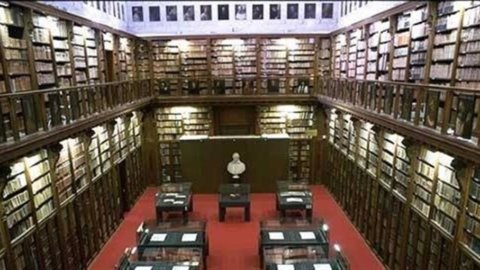From 14 April to 12 July 2015, the Biblioteca Ambrosiana in Milan (Piazza Pio XI, 2) hosts the exhibition BREAD AND NOT ONLY. The foods, the books , which presents 15 richly illuminated manuscripts, among the most precious in the world, produced by the most varied Jewish and Greek, Latin, Arab and Italian iconographic traditions that reflect on art, science and faith as nourishment for beauty and love that every human being needs.
The exhibition that anticipates the topics covered by EXPO 2015 revolves around the page painted around 1340 in Avignon by Simone Martini for the code of Virgilio owned by Francesco Petrarch; in this case, the supreme singer of Rome is portrayed ecstatic above shepherds and farmers intent on their hard work.
The review underlines not only the irreplaceable value of art as food for humanity, but also the universal contribution of Arab culture to the sciences, with the masterpiece of the encyclopedic work of zoology by ?Amr bin Bahr al-Gahiz (Basra, 776 -869). Scholar of probably Abyssinian origins, "gray eminence" of the Caliph of Baghdad, theologian and polemicist, he discussed the problem of the harmony between faith and reason.
Il Animal book is his unfinished masterpiece, in which he inserts reflections on theology, metaphysics, sociology and psychology on the theme of zoology, anticipating aspects of modern evolutionary theory, giving us delicate female scenes of harem.
Next to the oldest Greek fragment of theIlias picta depicting the gods at a banquet sung by Homer in the Iliad, among the other sumptuous illuminated manuscripts stands out the code on the Baths of Pozzuoli (De balneis Puteolanis) illustrated around 1470 in Naples by Cola Rapicano; Pietro da Eboli praises you the innumerable benefits of Bagno called Archetto, which defends the liver from inflammation, relieves rheumatism and stomach ache, frees the head from severe colds, promotes a restorative torpor. The elegance of the French school miniature is expressed in another page of great beauty, in which the Sobriety andGreed – The rich banqueter and the poor at his door.
The exhibition opens and closes with scenes of eschatological and mystical banquets of the Jewish and Christian traditions, in which the poetry of wine and the friendship of the symposium intertwine with stars and animals in arcane symbolism.
Among these stands out the bifolium on parchment, inserted at the end of a splendid Franco-German Jewish Biblical Codex from the years 1236-1238. The final two pages depict unusual themes in Jewish iconography: on the right, a vision of the cosmos with the sun, the moon and fifteen stars in the seven heavens in the centre; in the outer corners the four living beings described by Ezekiel; on the left the three animals of the origins – Ziz, Leviathan, Behemoth – and below them the eschatological Banquet of the Righteous (Se?udat ha-Zaddiqim), which will be fulfilled in the times of the Messiah in Jerusalem.





